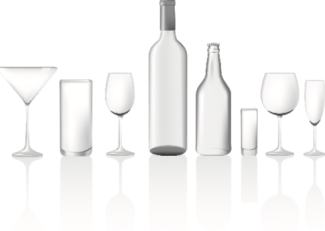Wine Glass Size and Wine Sales

Excessive alcohol consumption is a continuous global public health concern.
It is believed that glass size can influence pouring behaviour, with larger glasses resulting in more alcohol being poured into them, and also by influencing perceptions of volume, with the same volume of alcohol being perceived as less when poured into larger compared with smaller glasses.
This information can be used when designing interventions to reduce alcohol intake.
A recent study, conducted by researchers from the Behaviour and Health Research Unit, University of Cambridge, has examined the effect of glass size on sales of wine in 2 restaurants and 2 bars in England.
Wine glasses of different sizes were changed over fortnightly periods in each establishment using 290 ml, 350 ml and 450 ml glasses.
Results from the studies found that:
- In restaurant 1 daily wine sales were 12.6% higher when 350 ml glasses were used compared to 290 ml glasses.
- Daily wine sales in restaurants when comparing the 450 ml and 350 ml glasses.
- In the bar, daily wine sales were 21.4% higher when sold using 450 ml glasses compared to 350 ml glasses.
- There was no significant difference when comparing the bar wine sales when using 350 ml glasses compared to 290 ml
Although expected results were not replicated across all the venues and the researchers admit uncertainty of the magnitude of the effect, the findings add to the evidence that suggests that larger glasses increase wine sales.